Jian You
Enhancing Fully Formatted End-to-End Speech Recognition with Knowledge Distillation via Multi-Codebook Vector Quantization
Dec 22, 2025Abstract:Conventional automatic speech recognition (ASR) models typically produce outputs as normalized texts lacking punctuation and capitalization, necessitating post-processing models to enhance readability. This approach, however, introduces additional complexity and latency due to the cascaded system design. In response to this challenge, there is a growing trend to develop end-to-end (E2E) ASR models capable of directly predicting punctuation and capitalization, though this area remains underexplored. In this paper, we propose an enhanced fully formatted E2E ASR model that leverages knowledge distillation (KD) through multi-codebook vector quantization (MVQ). Experimental results demonstrate that our model significantly outperforms previous works in word error rate (WER) both with and without punctuation and capitalization, and in punctuation error rate (PER). Evaluations on the LibriSpeech-PC test-clean and test-other subsets show that our model achieves state-of-the-art results.
A light-weight and efficient punctuation and word casing prediction model for on-device streaming ASR
Jul 18, 2024Abstract:Punctuation and word casing prediction are necessary for automatic speech recognition (ASR). With the popularity of on-device end-to-end streaming ASR systems, the on-device punctuation and word casing prediction become a necessity while we found little discussion on this. With the emergence of Transformer, Transformer based models have been explored for this scenario. However, Transformer based models are too large for on-device ASR systems. In this paper, we propose a light-weight and efficient model that jointly predicts punctuation and word casing in real time. The model is based on Convolutional Neural Network (CNN) and Bidirectional Long Short-Term Memory (BiLSTM). Experimental results on the IWSLT2011 test set show that the proposed model obtains 9% relative improvement compared to the best of non-Transformer models on overall F1-score. Compared to the representative of Transformer based models, the proposed model achieves comparable results to the representative model while being only one-fortieth its size and 2.5 times faster in terms of inference time. It is suitable for on-device streaming ASR systems. Our code is publicly available.
MHSnet: Multi-head and Spatial Attention Network with False-Positive Reduction for Pulmonary Nodules Detection
Feb 16, 2022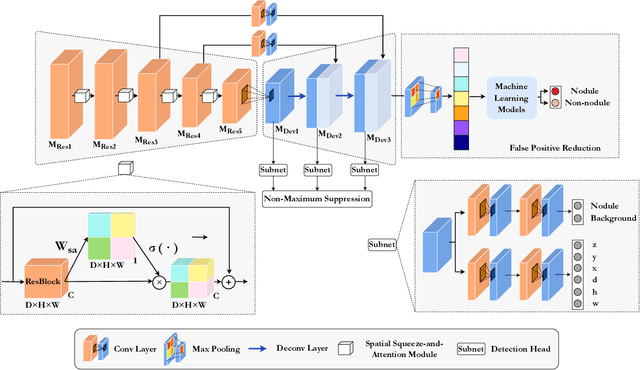
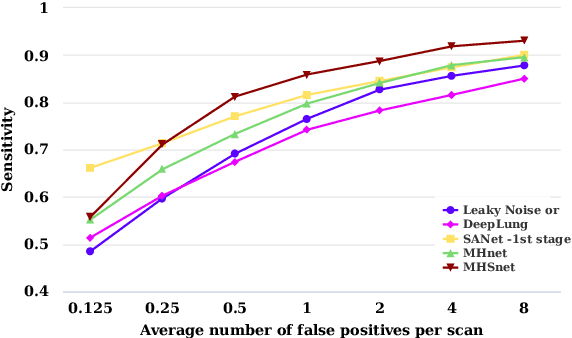
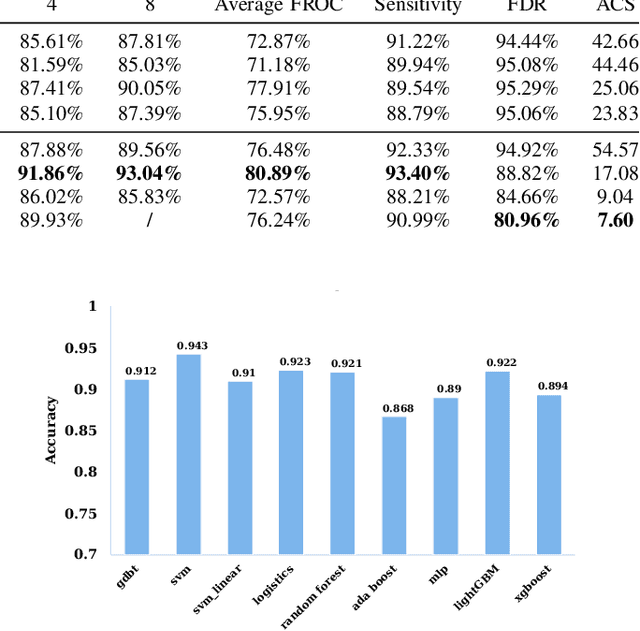
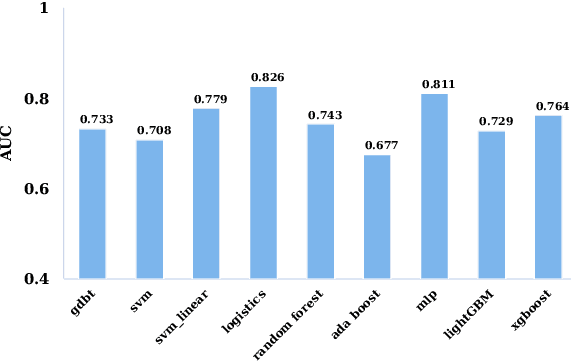
Abstract:The mortality of lung cancer has ranked high among cancers for many years. Early detection of lung cancer is critical for disease prevention, cure, and mortality rate reduction. However, existing detection methods on pulmonary nodules introduce an excessive number of false positive proposals in order to achieve high sensitivity, which is not practical in clinical situations. In this paper, we propose the multi-head detection and spatial squeeze-and-attention network, MHSnet, to detect pulmonary nodules, in order to aid doctors in the early diagnosis of lung cancers. Specifically, we first introduce multi-head detectors and skip connections to customize for the variety of nodules in sizes, shapes and types and capture multi-scale features. Then, we implement a spatial attention module to enable the network to focus on different regions differently inspired by how experienced clinicians screen CT images, which results in fewer false positive proposals. Lastly, we present a lightweight but effective false positive reduction module with the Linear Regression model to cut down the number of false positive proposals, without any constraints on the front network. Extensive experimental results compared with the state-of-the-art models have shown the superiority of the MHSnet in terms of the average FROC, sensitivity and especially false discovery rate (2.98% and 2.18% improvement in terms of average FROC and sensitivity, 5.62% and 28.33% decrease in terms of false discovery rate and average candidates per scan). The false positive reduction module significantly decreases the average number of candidates generated per scan by 68.11% and the false discovery rate by 13.48%, which is promising to reduce distracted proposals for the downstream tasks based on the detection results.
A Coarse-to-fine Morphological Approach With Knowledge-based Rules and Self-adapting Correction for Lung Nodules Segmentation
Feb 07, 2022

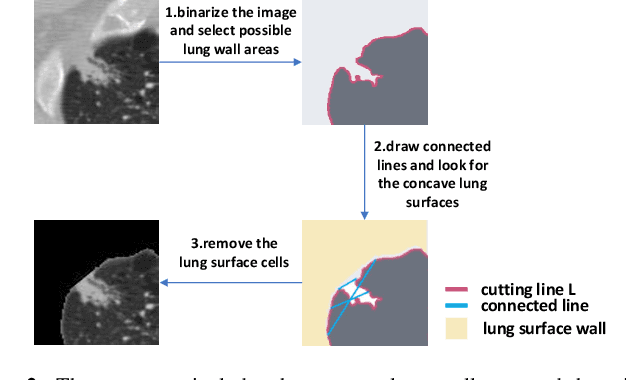

Abstract:The segmentation module which precisely outlines the nodules is a crucial step in a computer-aided diagnosis(CAD) system. The most challenging part of such a module is how to achieve high accuracy of the segmentation, especially for the juxtapleural, non-solid and small nodules. In this research, we present a coarse-to-fine methodology that greatly improves the thresholding method performance with a novel self-adapting correction algorithm and effectively removes noisy pixels with well-defined knowledge-based principles. Compared with recent strong morphological baselines, our algorithm, by combining dataset features, achieves state-of-the-art performance on both the public LIDC-IDRI dataset (DSC 0.699) and our private LC015 dataset (DSC 0.760) which closely approaches the SOTA deep learning-based models' performances. Furthermore, unlike most available morphological methods that can only segment the isolated and well-circumscribed nodules accurately, the precision of our method is totally independent of the nodule type or diameter, proving its applicability and generality.
 Add to Chrome
Add to Chrome Add to Firefox
Add to Firefox Add to Edge
Add to Edge